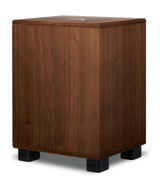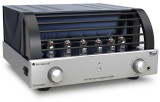Your Cartridge/Stylus Is The Beginning Of A Great Vinyl Experience
Your Cartridge/Stylus Is The Beginning Of A Great Vinyl Experience
A lot of people new to turntables often mistake the stylus for the cartridge, assuming one for the other. However, the stylus is one piece in a chain of parts that make up the ‘phono cartridge,’ and it’s the phono cartridge that’s responsible for not only reading the information on the record, but converting that information into electrical signals that are later amplified and played through your speakers. Needless to say, it's one of the most important elements of your turntable and the place where all the magic of analogue music begins. In fact, understanding the significance of its role is the first step to understanding how individual components can be upgraded, not only for your hifi system but also within the turntable itself.
So how does it work?
A phono cartridge, put very simply, is a transducer: a mechanism that converts mechanical energy to electrical energy, and vice versa. Records are cut using an electrical signal that’s fed into the left and right channels of a cutter head. The transducer in the cutter head converts those signals into mechanical vibrations in the cutter’s stylus, and it's those vibrations which create the grooves in the record. Important to note: record grooves are cut in a “V” shape, moving — ever so slightly — left and right and up and down within the record, and this gives us left and right stereo channels.
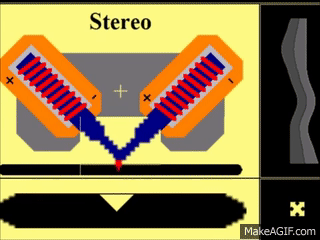
How we reproduce analogue music is very simple: the process is reverse engineered. The stylus from our phono cartridge, much like the stylus in the cutter head, retraces the original cuts made, vibrates at the same frequencies, and is transformed back into electrical signals by our phono cartridge. All we need to do after that is amplify the signal. Simple!
Or so you’d think.
The science behind reproducing analogue music is not an exact science. In fact, it’s far more of an art, and varying designs in combination with varying materials produce alternate sounds. From the shape of the stylus tip (spherical, elliptical, fine line) to the material used in its construction (nude diamond, diamond tip), from moving magnet cartridges (MM) to moving coil cartridges (MC), it all makes a difference to the end result
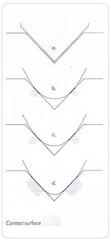
A. Cutter B. Spherical C. Elliptical D. Fine Line
The finer the stylus tip the greater the surface contact with the higher frequencies on a record, and, in turn, the more detailed the reproduction of that range. However, the process of grinding and shaping them is more intensive and therefore pricier, costing you more at the counter. Another consideration is a nude diamond or diamond tipped stylus construction. Nude diamond styli are an entire diamond construction mounted to the cantilever, while diamond tipped styli are a diamond tip mounted to a metal shank. And according to Ortofon (the largest cartridge manufacturer in the world), this type of stylus construction has the ability to increase stylus mass and thus ‘impair the cartridge’s transient reproduction’.
Not so straight forward anymore, is it?
The major difference in cartridge design is the difference between moving coil and moving magnet, and though the difference in design is subtle the sound is anything but. Without going into great detail, moving magnet cartridges are known to produce lush, mellow sound. Their high voltage output makes them compatible with most phono stage/preamplifiers, almost all offer replacement styli, and they come in a variety of makes and models. It's for this reason moving magnet cartridges, or MM cartridges, offer the best value for money at an entry-level range. If you’re only just dipping your toe into the pool of analogue music, an MM cartridge offers great value without needing to splash out.
In opposition to the MM design is the moving coil cartridge. MC cartridges are known to have better tracking –– important for two reasons: less chance the tip will lose contact with the record, therefore the signal, and less chance it'll damage your records. On top of tracking, moving coil cartridges tend to display better tonality, transparency, and imaging. Generally speaking, they're the audiophile choice of cartridge for mid to high end turntables, offering the kind of warmth and dynamism people generally associate with vinyl records. But, when it comes to MC cartridges it's important to bear in mind the Law of Diminishing Returns. This means there's no point putting a $700-$800 cartridge on a $500 turntable; the table won't stack up. And most MC cartridges begin around this price.
Beyond all that, maybe bear this in mind: great sound from the equipment you own comes from upgrading components to just within the threshold of the Law of Diminishing Returns. In terms of cartridges, it means one that'll squeeze the best possible sound from your turntable without (a) spending too much, and (b) inhibiting the range this cartridge has to offer.
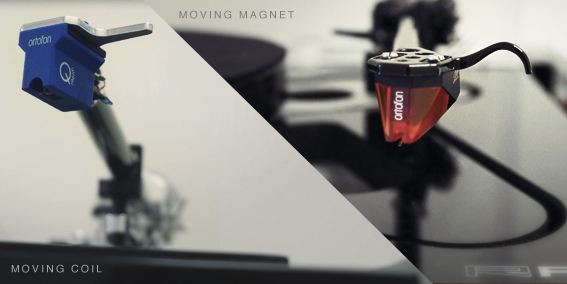
Recent Posts
-
Advance Paris Audio Now At Stereophonic
**Unveiling the Marvels of Sound: Advance Paris Audio Brand** In the realm of high-end audio, w …31st Oct 2023 -
The New REL Classic 98 Sub Woofer
IntroductionIn the world of audio, the quest for deep, impactful bass is never-ending. Audiophiles a …7th Oct 2023 -
World-Class PrimaLuna: Elevating Your Audio Experience
Introduction to PrimaLunaIn the pursuit of high-fidelity audio, audio enthusiasts are constantl …30th Jun 2023


